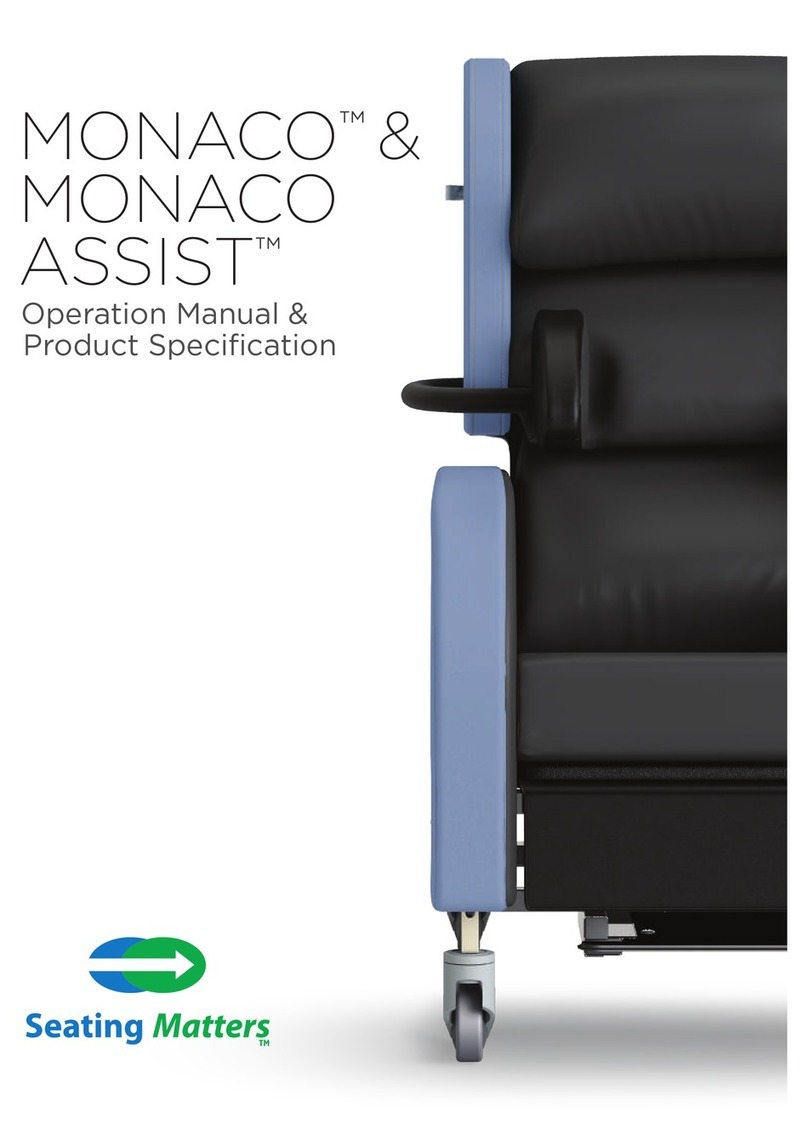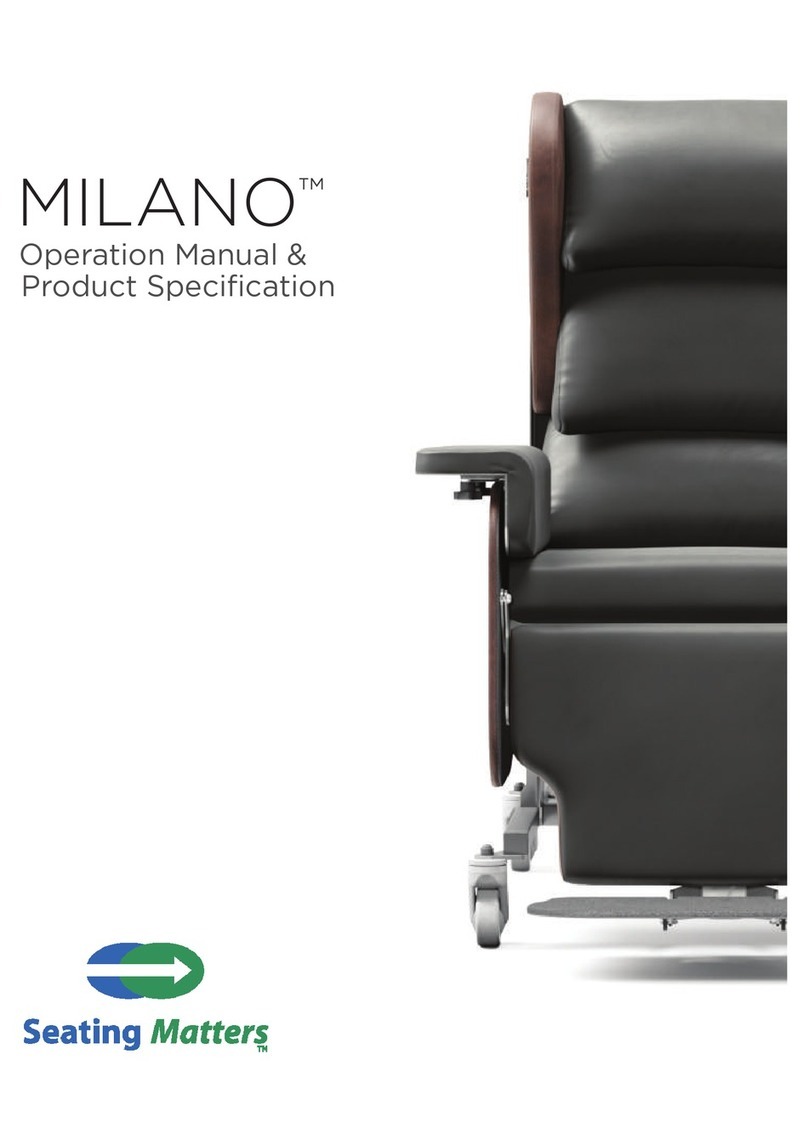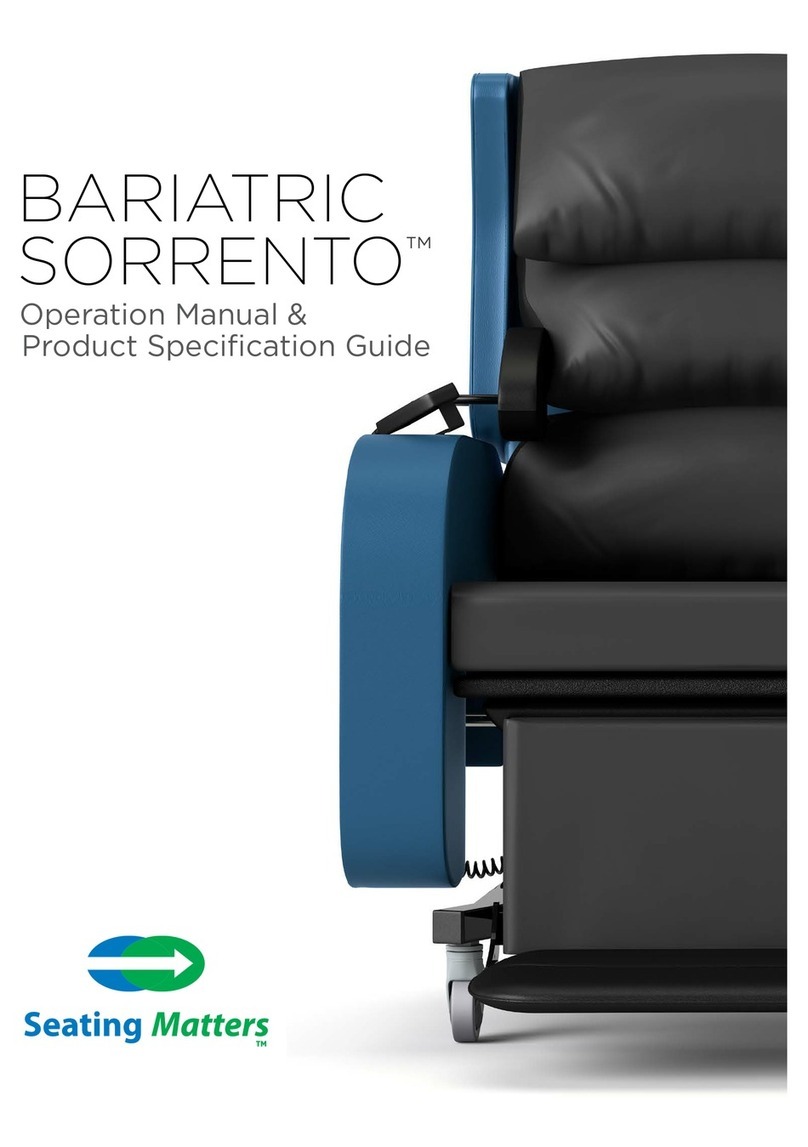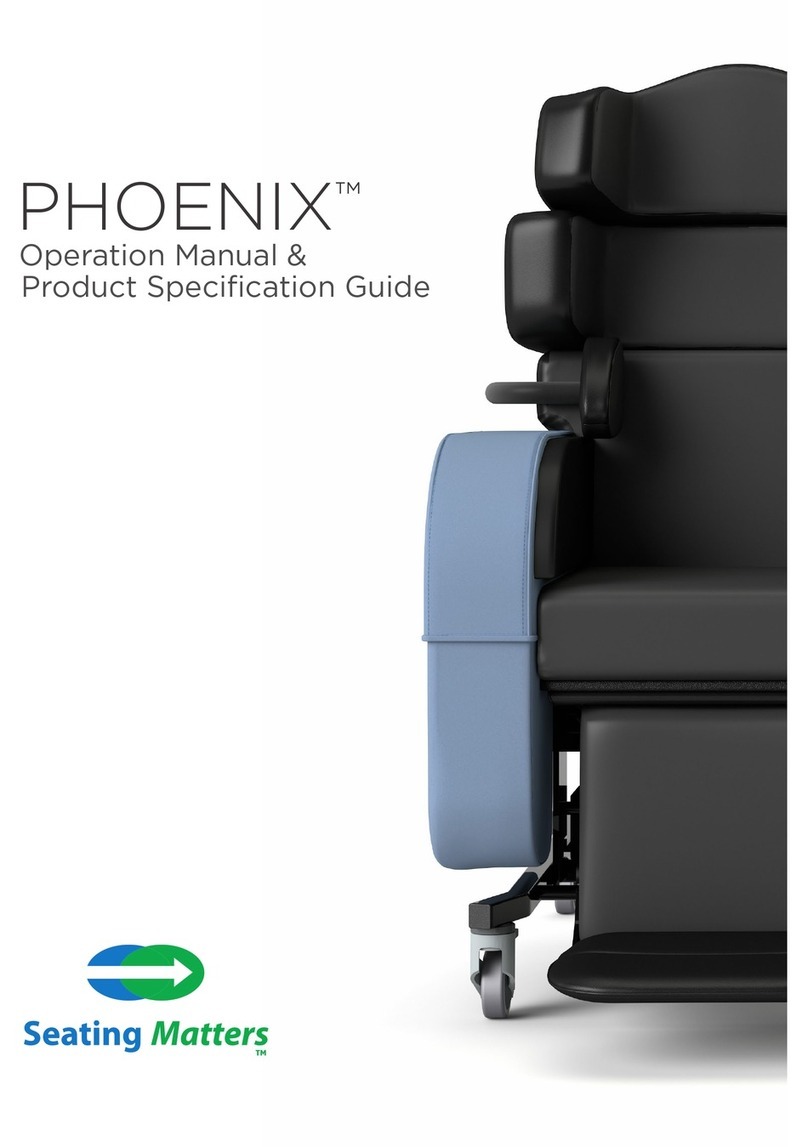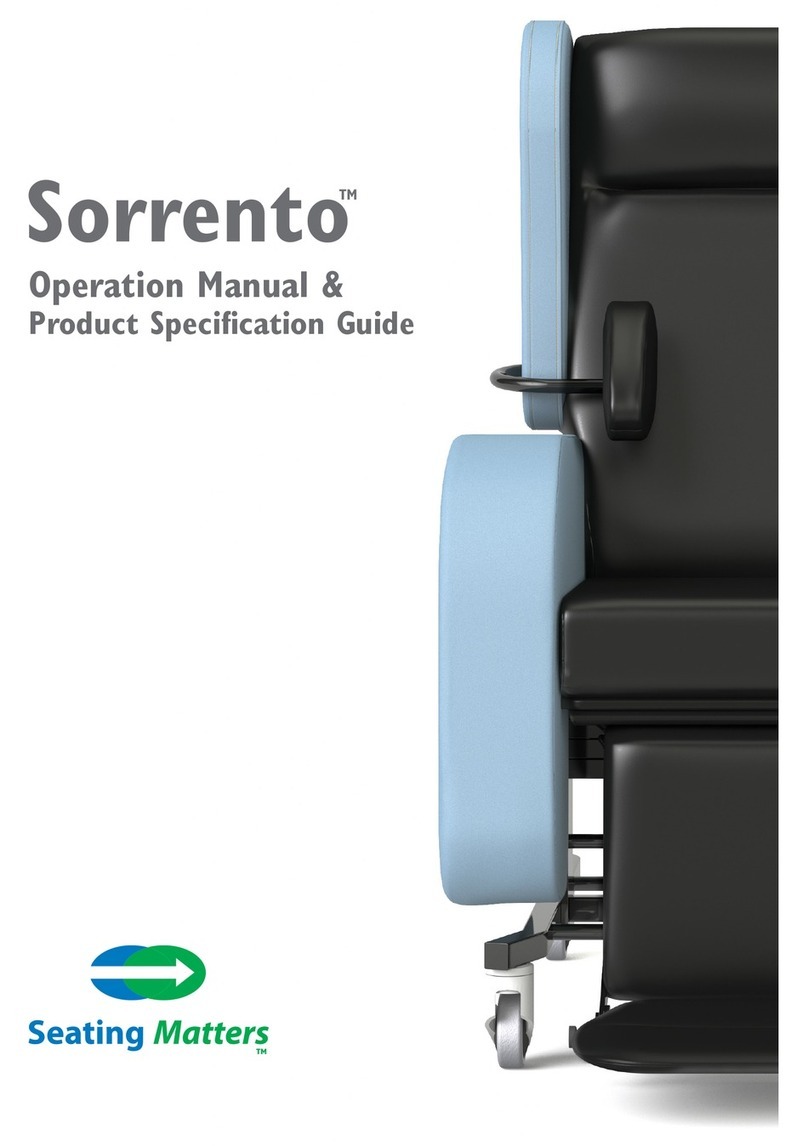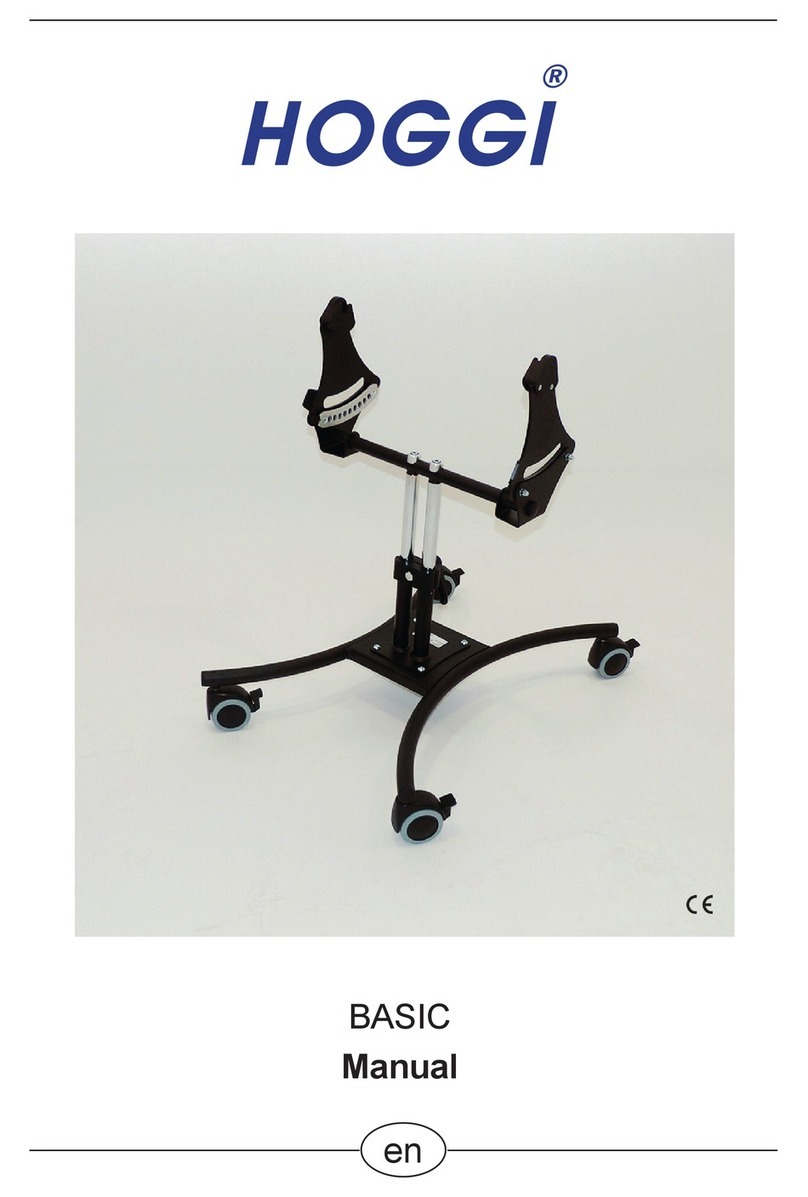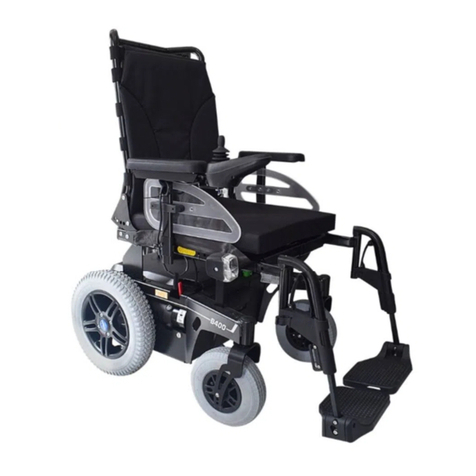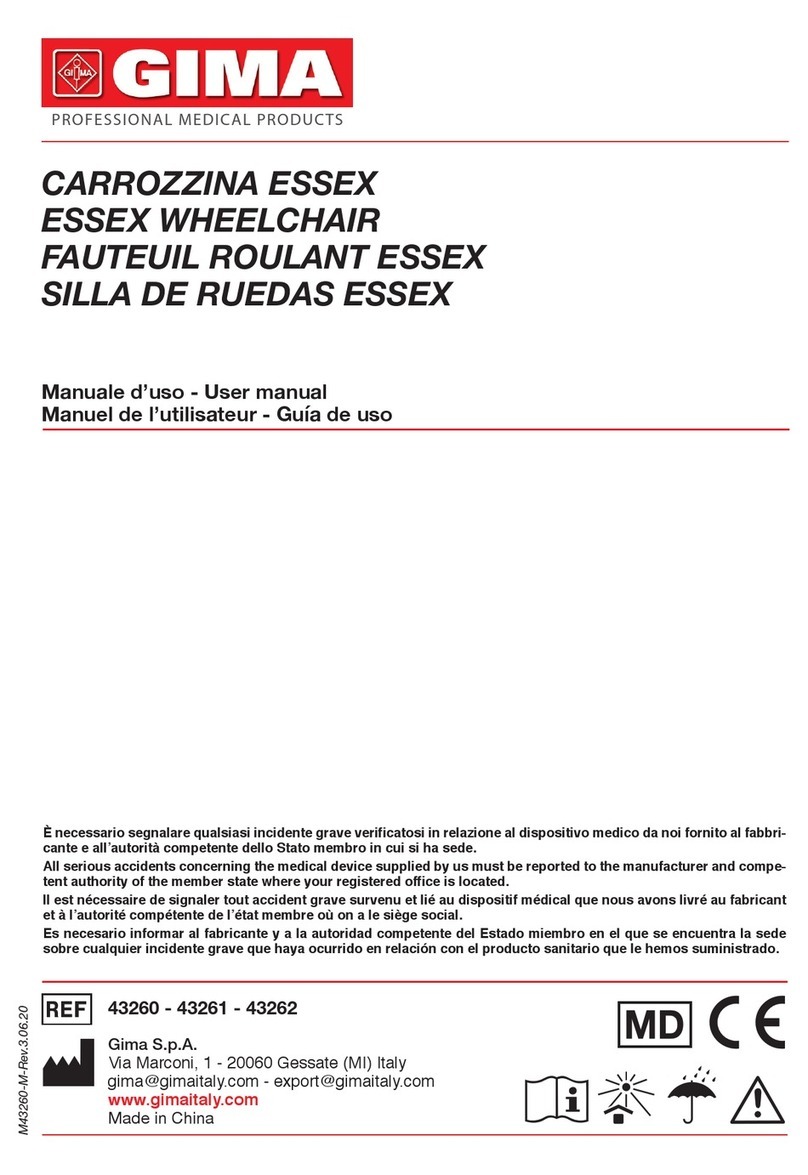
CLEANING & MAINTENANCE OF FABRIC
Non-absorbent, anti-bacterial, flame retardant, strong, durable material for outer
arms, outside back etc.
Vinyl is resistant to urine, most household stains, mild acids/alkalis, drinks and
beverages as they are not absorbed by the vinyl and can be wiped o without any
problem or lasting damage. Some dicult substances such as lipstick, ball point
pen ink and food colourings should be cleaned o immediately to avoid permanent
staining.
• Cleaning:
To ensure proper cleaning and longevity of the fabrics, the chairs should be cleaned
with warm soapy water followed by a clean water rinse to help retain the attractive
appearance and durability. Heavy, ingrained soiling may be removed by scrubbing
with a soft brush. Strong detergents, solvent cleaners, polishes or patent chemical
cleaners should not be used as they are unnecessary and may cause embrittlement
and cracking of the material.
• Additional Care:
Special attention should be given to head rest and arm rest areas, as build-up of
body oils in these areas will gradually cause the vinyl to harden.
Dartex Multi Stretch Fabric (Patient contact surface)
Waterproof, stain resistant, flame retardant, multidirectional stretch fabric for direct
contact surfaces – i.e. seat cushion, calf pad, lateral supports and seat back.
Properties:
This fabric is waterproof, has the ability to be wiped clean and has biostatic
(anti mycotic) coatings to provide an impenetrable barrier to virus and bacteria.
Superficial dirt may be removed by wiping with a soft cloth moistened with water
containing a neutral detergent. More persistent contamination may be treated by
wiping with alcohols or turpentine substitute, followed by hot water and detergent.
Routine cleaning and disinfection may be carried out on the coating with hand hot
water and a neutral detergent or with a sodium hypochlorite solution (0.1% or 1000
parts per million available chlorine). The material is compatible with the 10,000ppm
available chlorine in solution required for the decontamination of blood spills. Excess
solution must be removed and the surface thoroughly rinsed and dried prior to
reuse or storage. Proprietary disinfectants may be used provided manufacturer's
instructions are followed. All cleaning agents, and disinfectants, must be thoroughly
rinsed o and the item dried before storage.
Failure to do this may result in damage to the polyurethane coating, react with the
chair frame, or negate the biocompatibility results of the fabric. It is essential that
articles be thoroughly dried after all cleaning procedures and before storage.
www.seatingmatters.com
12





















